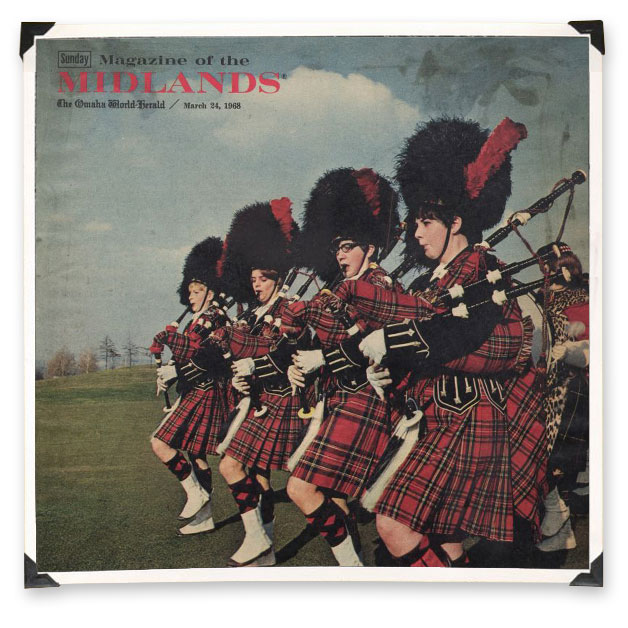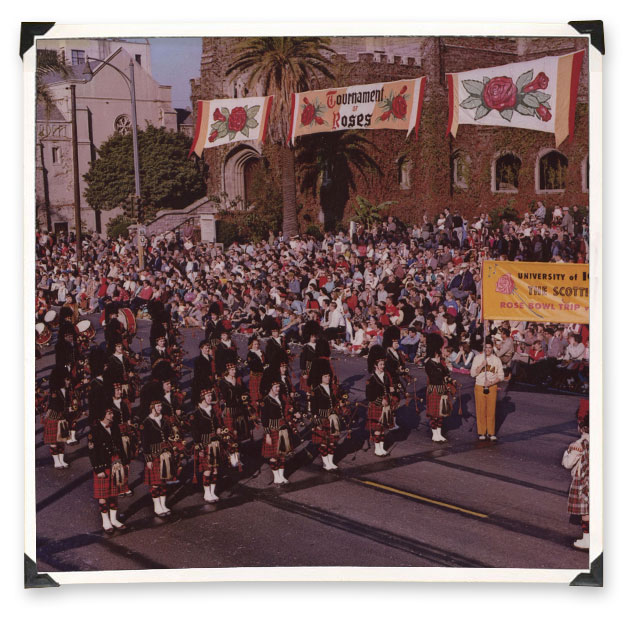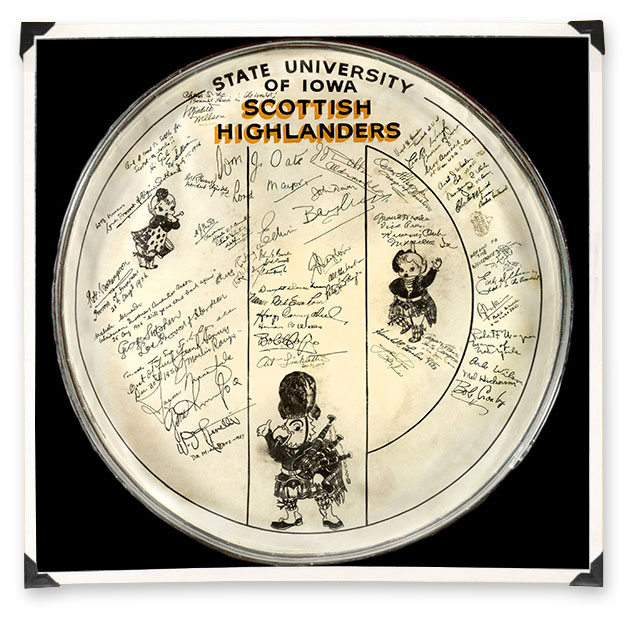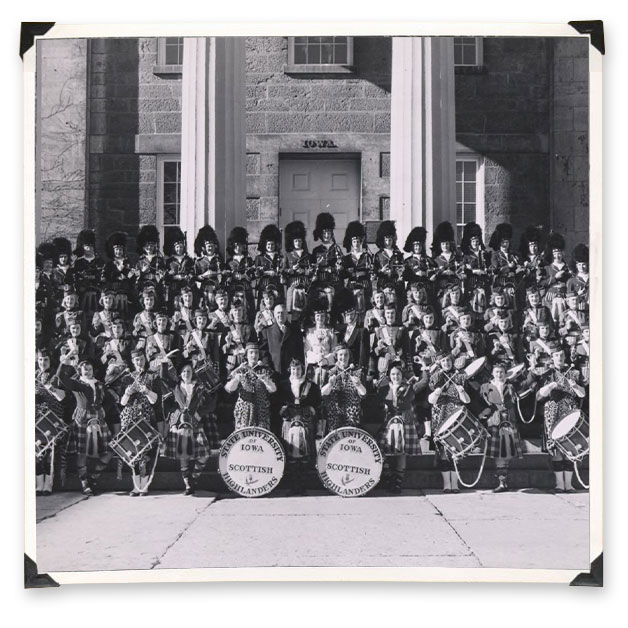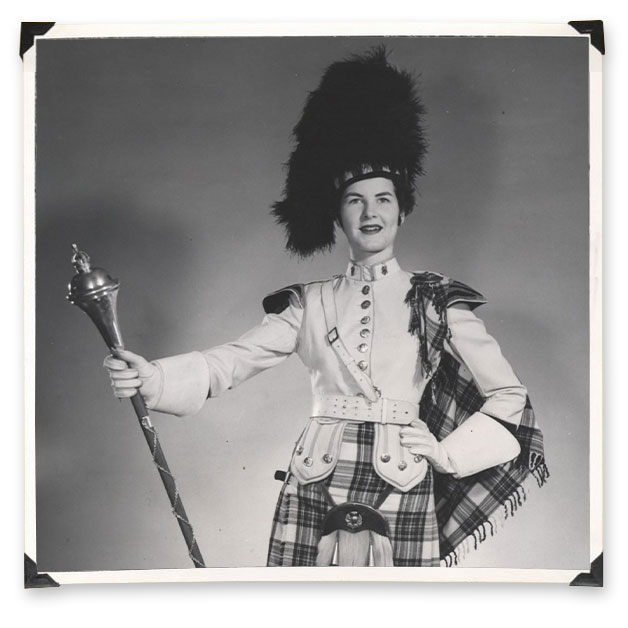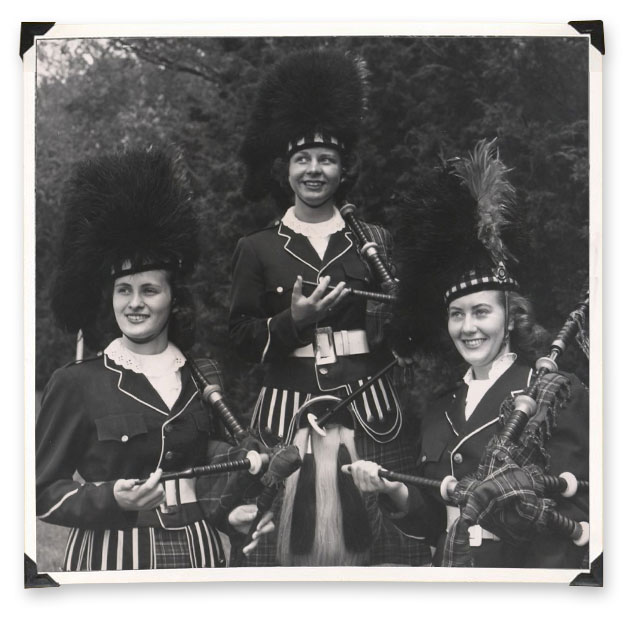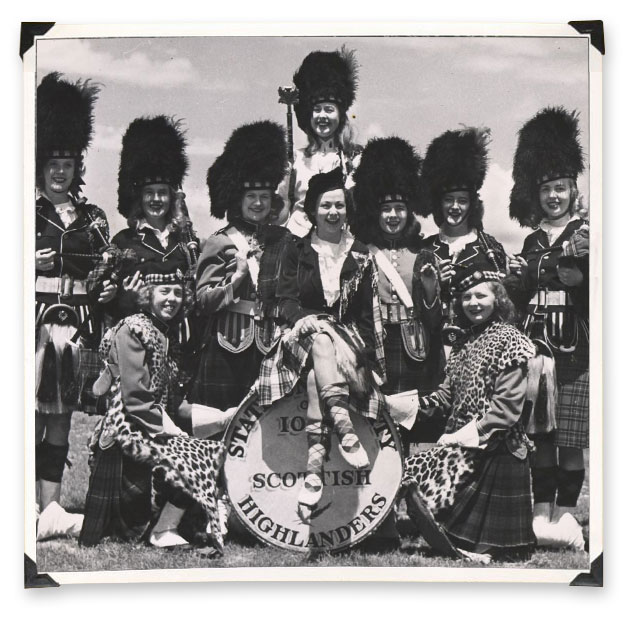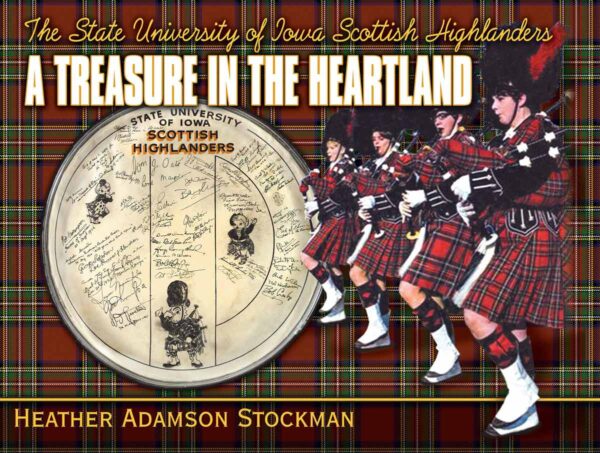IOWA Magazine | 10-19-2021
New Book Celebrates Iowa's Scottish Highlanders
By Josh O'Leary
4 minute read
Once the world’s largest bagpiping band, the unique group served as ambassadors for the UI from 1936 to 2007.
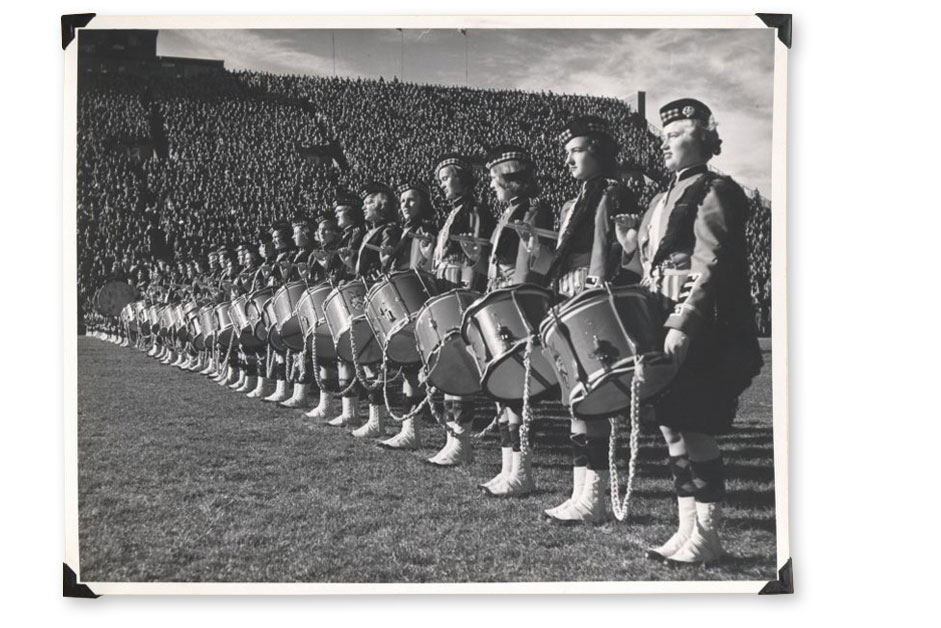 PHOTOS: UI LIBRARIES UNIVERSITY ARCHIVES
The Scottish Highlanders were a game day staple for decades at Iowa Stadium, which became Kinnick Stadium. Pictured here, the Highlanders perform during a 1951 Hawkeye football game.
PHOTOS: UI LIBRARIES UNIVERSITY ARCHIVES
The Scottish Highlanders were a game day staple for decades at Iowa Stadium, which became Kinnick Stadium. Pictured here, the Highlanders perform during a 1951 Hawkeye football game.
They delighted the nation on Ed Sullivan’s stage, charmed dignitaries across Europe, and enchanted football fans from here to Pasadena.
For more than four decades, the University of Iowa’s troupe of tartan-kilted musicians and dancers known as the Scottish Highlanders put an unexpectedly Hawkeye spin on traditional drum and bagpipe music.
This fall—arriving 85 years after the group’s founding—a new book documents this unique chapter of Iowa history. Heather Adamson Stockman, the daughter of longtime Highlander director William Adamson (62BA), spent the past three years collecting photos and stories for A Treasure in the Heartland, the first-ever book celebrating what was once billed as the world’s largest bagpipe band.
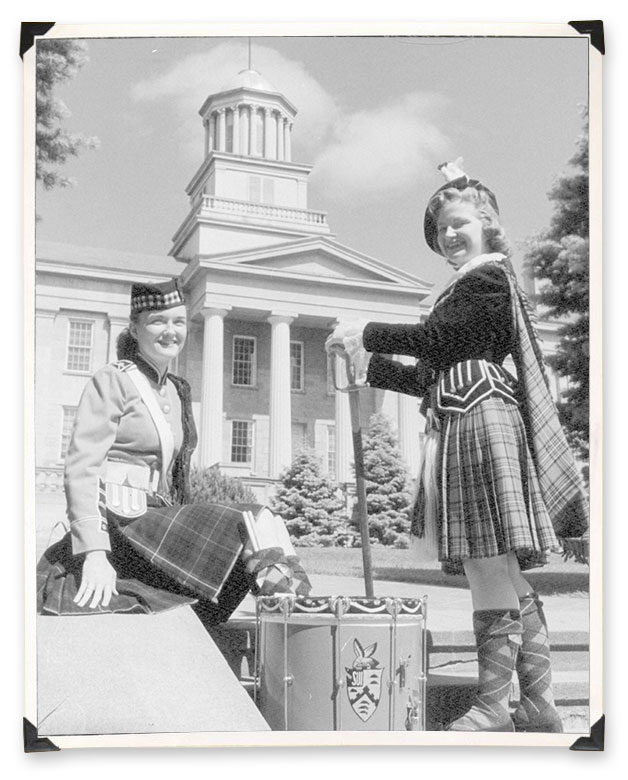 PHOTOS: UI LIBRARIES UNIVERSITY ARCHIVES
Scottish Highlanders performers Dorothy Roudabush Carpenter (57BA), left, and Sue Donelson-Davidson (57BA) pose in front of the Old Capitol in the 1950s.
PHOTOS: UI LIBRARIES UNIVERSITY ARCHIVES
Scottish Highlanders performers Dorothy Roudabush Carpenter (57BA), left, and Sue Donelson-Davidson (57BA) pose in front of the Old Capitol in the 1950s.
A former Highlander dancer from 1964 to 1968, Stockman is among the alumni leaders who have worked to preserve the group’s rich history in the years since it disbanded. That includes hosting reunion events, working with UI Libraries’ Special Collections to digitize records, and partnering with the UI Athletics Hall of Fame to exhibit its artifacts. Proceeds from the book will be donated to the Scottish Highlander Fund at the UI Center for Advancement to help carry forth the group’s legacy.
Col. George F.N. Dailey founded the Scottish Highlanders in 1936, shortly after he became commander of the Reserve Officer Training Corps at the university. Dailey, who had plans to establish a drum and bugle corps to accompany his ROTC unit, attended a military event in Scotland and was taken by the pageantry of the bagpiping band. Dailey formed a novice band of pipers at the UI and eventually recruited Stockman’s father, a Boston musician who came from a long line of Scottish bagpipers, to lead the troupe.
Under Adamson’s direction from 1937 until his death in 1965, the Highlanders flourished. What began as an all-male group transitioned to a women’s group in 1943, when 71 of its 75 members were called to war. It wasn’t until 1973 that men returned to its ranks.
“It was a prestigious thing,” Stockman says. “We’d have 500 women try out in the fall for 30-some openings. My father had high expectations and strict rules of conduct, but he also directed with kindness.”
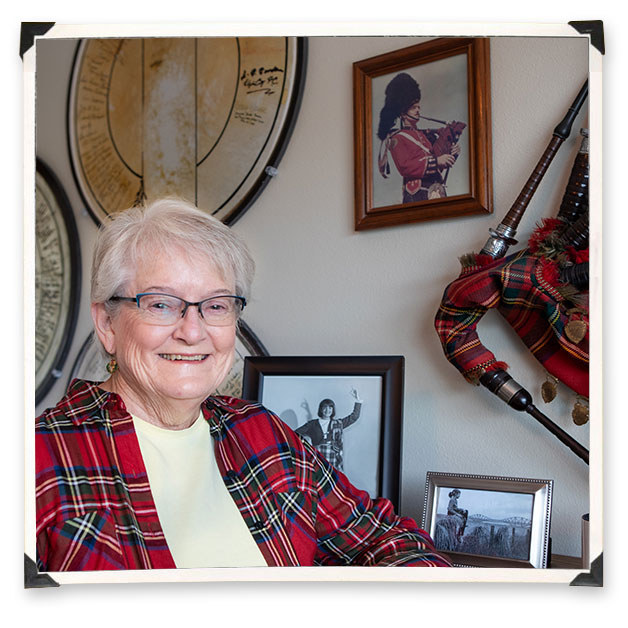 PHOTO: JOHN EMIGH
Heather Adamson Stockman, pictured in her Iowa City home, is author of a new book on the history of the University of Iowa's Scottish Highlanders.
PHOTO: JOHN EMIGH
Heather Adamson Stockman, pictured in her Iowa City home, is author of a new book on the history of the University of Iowa's Scottish Highlanders.
A crowd favorite during Hawkeye football games, the Highlanders accompanied the team to two Rose Bowls in the 1950s. But they were more than just game day novelty. The troupe traveled for hundreds of national and international performances, including two world’s fairs, seven summerlong tours of Europe, the Macy’s Thanksgiving Day Parade and appearances on The Ed Sullivan Show and The Tonight Show. Members collected dozens of signatures from celebrities and dignitaries on their bass drums, which are now preserved in UI Libraries’ Special Collections. The autographs include entertainers Bob Hope and Art Linkletter, and presidents Dwight Eisenhower, John F. Kennedy, and Richard Nixon.
Ultimately, budget cuts led to the university ending its funding for the Highlanders in 1981. The group continued as a student club for several years, but performances and participation waned. The Highlanders played their final event in 2007 before formally disbanding the following year.
Today, Stockman maintains a mailing list of about 1,000 former Highlanders and friends of the group. While the wail of the bagpipes has faded into memory, the friendships forged have lasted a lifetime. “Any college can have a marching band,” says Stockman, “but few people realize the accomplishments of this group.”
Join our email list
Get the latest news and information for alumni, fans, and friends of the University of Iowa.
Join our email list
Get the latest news and information for alumni, fans, and friends of the University of Iowa.

